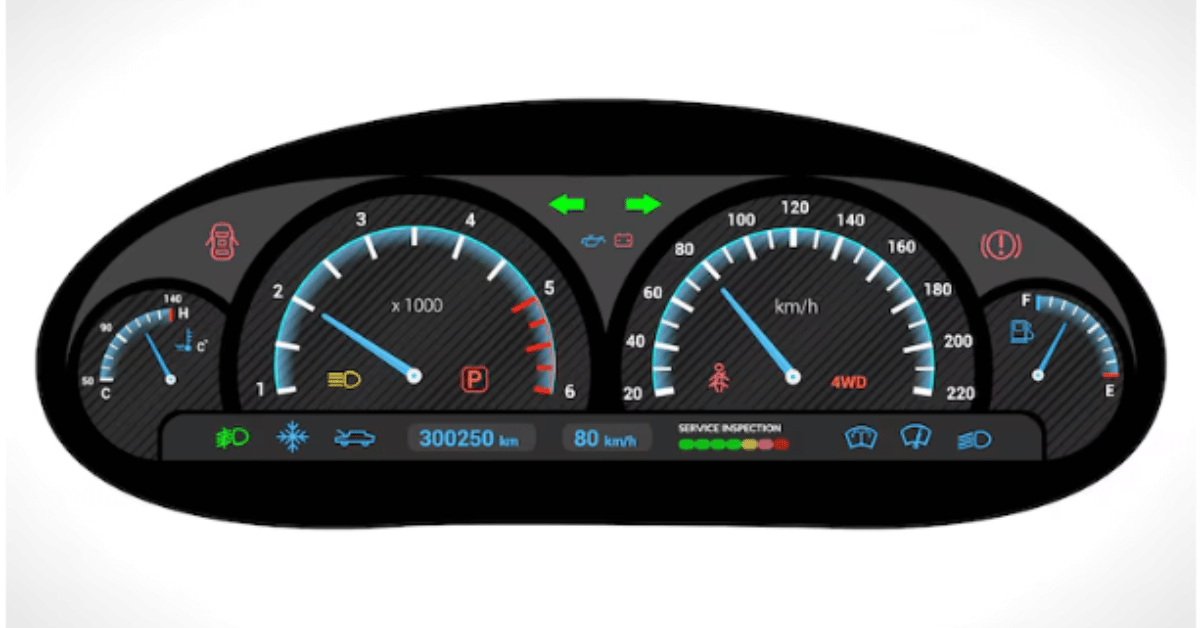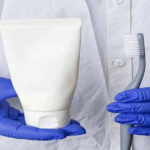A tachometer is a precision instrument designed to measure the rotational speed of a shaft or disk, most often expressed in revolutions per minute (RPM). For anyone working with engines, turbines, or industrial machinery, understanding how fast a component rotates is essential for performance, safety, and efficiency. In the simplest terms, a tachometer tells you how quickly something is spinning. This information becomes critical in automobiles, airplanes, marine engines, and factory machines where exact speed regulation determines both reliability and productivity. The word itself comes from the Greek “tachos,” meaning speed, and “metron,” meaning measure.
The intent of this article is to give readers a complete overview of tachometers—their working principles, different types, technical construction, calibration practices, and modern uses in industries ranging from automotive to aerospace. Within the first hundred words, it should be clear that tachometers are not simply dashboard instruments but vital tools that ensure machinery operates within its safe and optimal range. Drivers, engineers, and technicians rely on tachometers daily, making them indispensable in both professional and everyday contexts. By the end of this article, you will not only understand the science behind tachometers but also appreciate why they remain central to innovation and safety in modern technology.
The Basic Working Principle of Tachometers
A tachometer functions on the principle of detecting rotation and translating that movement into a readable number for users. Mechanical versions often rely on centrifugal force: as a shaft spins, weights move outward, causing a needle to shift proportionally. Electronic tachometers, more common today, use sensors to detect pulses generated by rotating components. Each pulse corresponds to one rotation, which is then counted and displayed digitally or via a needle gauge.
This seemingly simple process hides remarkable engineering. The key lies in accuracy and responsiveness. A tachometer must be able to capture fluctuations instantly. If a car engine revs suddenly, the needle or display has to respond without delay. In industrial systems, the consequences of delayed readings could be catastrophic, leading to overheating, equipment failure, or even accidents. Thus, tachometers are designed with sensitive detection systems, stable circuitry, and calibration protocols to ensure trustworthy results. The combination of measurement and real-time feedback makes them far more than passive instruments.
Historical Evolution of Tachometers
The history of tachometers dates back to the 19th century when steam engines dominated industry. Engineers needed a way to measure engine speeds to prevent over-revving. Early designs were mechanical, using spinning governors similar to those found in locomotives. By the late 1800s, tachometers appeared in automobiles, allowing drivers to monitor engine health. With the advent of aviation in the 20th century, the tachometer became indispensable for pilots managing propeller speeds.
The evolution from mechanical to electronic tachometers began in the mid-20th century. The development of semiconductors and digital circuits made it possible to detect rotational speeds with higher precision. Today, tachometers are integrated with microcontrollers, enabling multifunctional displays that show not just RPM but also diagnostic information. This transformation mirrors the larger journey of instrumentation: moving from analog simplicity to digital intelligence. Yet, despite the technological leap, the core function—measuring speed—remains unchanged, underscoring how enduring this device has been in human engineering progress.
Types of Tachometers
Tachometers come in multiple forms, each suited to a particular application. Understanding these distinctions helps determine the right instrument for a specific task.
Table 1: Types of Tachometers and Their Characteristics
| Type of Tachometer | Operating Principle | Key Applications | Advantages | Limitations |
|---|---|---|---|---|
| Mechanical | Centrifugal force or contact rotation | Vintage cars, old machinery | Simple, no power required | Limited accuracy, wear and tear |
| Analog | Magnetic or electrical sensing | Cars, motorcycles, industrial tools | Immediate needle display | Less data storage, prone to errors |
| Digital | Pulse counting with sensors | Modern vehicles, aerospace, robotics | High accuracy, multifunctional | Needs power supply, complex circuits |
| Non-contact | Laser or optical sensors | High-speed turbines, delicate equipment | No wear, high safety | Costly, sensitive to dust |
| Portable | Handheld, battery-powered | Field testing, machinery inspection | Versatile, mobile | Not suited for continuous monitoring |
Each type addresses unique demands. For example, a digital tachometer in a factory setting can integrate with programmable logic controllers (PLCs) for automation, while a portable handheld tachometer suits technicians who need flexibility across different machines.
Automotive Applications of Tachometers
In cars, tachometers occupy a central place on the dashboard, usually alongside the speedometer. They inform drivers of engine revolutions, allowing them to shift gears at the correct time. A redline—the maximum safe RPM—is clearly marked to prevent engine damage. For manual transmission vehicles, tachometers are particularly useful in guiding efficient gear changes. Even in automatic cars, they serve diagnostic roles, indicating if an engine is idling too high or struggling at low revolutions.
Modern cars integrate tachometers with onboard diagnostics. A malfunctioning ignition coil, faulty fuel injection, or transmission problem can reflect in irregular tachometer readings. Motorsport further highlights their importance. Race car drivers rely on tachometers to maintain peak performance without exceeding limits that could destroy engines. Beyond racing, tachometers in trucks and buses help fleet managers monitor driving patterns, fuel efficiency, and mechanical wear. In every automotive setting, tachometers combine safety, performance, and economy in one compact dial.
Tachometers in Industrial Settings
Industrial machinery depends heavily on controlled rotational speeds. Consider conveyor belts, turbines, or pumps: their efficiency hinges on precise RPM. Tachometers in these contexts are often digital and connected to automated systems. For example, in textile factories, where looms spin thousands of threads per minute, even slight variations can ruin production. Tachometers provide operators with instant alerts if machinery runs outside safe limits.
In energy plants, turbines require monitoring at extremely high speeds. A failure to track rotations can result in catastrophic mechanical failure. Similarly, in chemical industries, agitators and mixers rely on accurate RPM readings for consistent results. Modern factories also utilize tachometers in predictive maintenance. By monitoring speed trends, technicians can anticipate mechanical wear before it results in costly breakdowns. Thus, tachometers are not just monitoring devices but predictive tools helping industries optimize both productivity and safety.
Aviation and Marine Applications
In aviation, tachometers are lifelines. Aircraft propellers and jet turbines must maintain specific speeds for stable flight. Any deviation in RPM could signal engine trouble, requiring immediate pilot action. Aviation tachometers are designed for extreme precision, often featuring redundancy systems to ensure reliability even if one instrument fails. Marine applications follow similar logic. Ship engines, whether on cargo ships or submarines, depend on tachometers for propulsion efficiency and fuel economy.
Pilots and ship captains alike view tachometers as vital companions. They integrate with broader navigation systems to ensure that propulsion aligns with operational goals. In emergencies, tachometer readings may provide the earliest signs of engine distress, enabling timely interventions. These specialized tachometers are often built to withstand environmental challenges such as vibrations, pressure changes, and saltwater exposure. Their ruggedness reflects the unforgiving conditions of air and sea, where safety depends on reliable instruments.
Calibration and Accuracy
A tachometer’s value lies in its accuracy. Calibration ensures that readings remain trustworthy over time. Mechanical wear, electrical interference, and sensor misalignment can all degrade performance. Calibration typically involves comparing tachometer readings against a reference standard, often a high-precision strobe or master tachometer. Adjustments are then made to bring measurements into alignment.
Industries often set strict calibration schedules. For instance, aviation regulators require periodic checks to certify that instruments remain airworthy. Automotive service centers calibrate tachometers during routine inspections, especially if drivers notice unusual readings. In factories, calibration is part of broader quality control. Without regular calibration, tachometers risk becoming misleading, which can result in inefficiency or even accidents. To professionals, calibration is not optional but essential—turning tachometers from mere devices into dependable tools of trust.
Table 2: Comparison of Tachometer Accuracy in Different Systems
| Industry | Typical Accuracy | Calibration Frequency | Common Errors |
|---|---|---|---|
| Automotive | ±1-2% of reading | During major servicing | Needle lag, electrical noise |
| Aviation | ±0.5% or better | Every flight cycle or scheduled maintenance | Sensor drift, vibration |
| Industrial | ±1% to ±3% | Quarterly or monthly | Dust interference, signal loss |
| Marine | ±1% | Seasonal maintenance | Salt corrosion, mechanical wear |
This table illustrates how calibration frequency and accuracy requirements differ. Aviation demands the strictest standards, while industrial contexts may tolerate broader margins, provided regular checks are in place.
Modern Innovations in Tachometer Technology
Recent years have witnessed innovations transforming tachometers from simple RPM counters into smart diagnostic tools. Digital tachometers now connect wirelessly to smartphones and laptops, enabling remote monitoring. Engineers can track real-time data across multiple machines simultaneously. Some tachometers incorporate data logging, storing historical records to identify patterns of wear or inefficiency.
Artificial intelligence is also entering this field. AI-driven tachometers analyze vibration and speed data to predict failures before they happen. Integration with the Internet of Things (IoT) means tachometers no longer stand alone; they form part of a connected ecosystem where every rotation feeds into broader analytics. For consumers, this might mean a car tachometer that warns about potential engine issues before a dashboard light appears. These innovations reflect a broader trend where measurement tools evolve into proactive partners in safety and performance.
Maintenance and Troubleshooting of Tachometers
Like any precision instrument, tachometers require proper care. Mechanical models need lubrication and occasional replacement of worn gears. Digital tachometers may demand sensor cleaning and firmware updates. Common issues include erratic readings, lagging needles, or total failure to register speed. Troubleshooting typically begins with checking sensor alignment, wiring connections, and power sources.
Environmental factors often contribute to malfunctions. In factories, dust and oil can block sensors. In marine environments, salt exposure corrodes connectors. Regular inspection, combined with preventive maintenance, extends the lifespan of tachometers. For technicians, mastering troubleshooting not only restores accuracy but also prevents downtime in critical systems. A well-maintained tachometer ensures reliability, reinforcing its role as a silent guardian of safety and efficiency across applications.
Future Prospects of Tachometers
The future of tachometers lies in deeper integration with smart technologies. Already, wearable tachometers are being explored for sports applications, measuring the RPM of exercise bikes or rowing machines. In aerospace, tachometers may integrate with autonomous systems to support pilotless aircraft. Industrial versions will likely become even more predictive, identifying not just when a machine is failing but suggesting exact interventions.
Sustainability is another frontier. Energy-efficient tachometers designed for renewable systems like wind turbines are in development. Here, precise speed monitoring is critical for harnessing maximum energy from blades. As global industries transition toward greener solutions, tachometers will continue evolving, cementing their status as essential instruments not just of speed measurement but of technological progress itself.
Conclusion
A tachometer may appear to be a simple dial or digital number on a display, but it represents a complex and vital engineering solution. From its 19th-century mechanical origins to today’s AI-driven smart instruments, the tachometer has consistently shaped how humans interact with machines. Whether guiding drivers in shifting gears, protecting turbines from failure, or ensuring aircraft safety, tachometers stand as trusted indicators of performance.
As one engineer remarked, “A tachometer is not just about counting revolutions—it is about sustaining trust in machinery.” Similarly, pilots often note, “The tachometer is the voice of the engine, speaking in numbers.” These observations underscore its enduring significance. Looking forward, tachometers will continue evolving, playing roles in sustainability, smart technology, and predictive diagnostics. Their future is as dynamic as the rotations they measure, reminding us that speed, when measured wisely, becomes the foundation of safety and progress.
FAQs
Q1: Why is a tachometer important in a car?
A tachometer helps drivers monitor engine revolutions, avoid over-revving, shift gears efficiently, and detect early signs of mechanical issues.
Q2: How often should a tachometer be calibrated?
Calibration frequency depends on industry. Aviation requires strict and frequent calibration, while automotive systems usually check during servicing.
Q3: Can a tachometer work without physical contact?
Yes, non-contact tachometers use lasers or optical sensors, ideal for high-speed or delicate machinery where direct contact is unsafe.
Q4: What causes tachometer malfunction in vehicles?
Common causes include faulty sensors, damaged wiring, poor grounding, or interference from ignition systems. Environmental wear also plays a role.
Q5: Are digital tachometers better than analog ones?
Digital tachometers generally offer higher accuracy, advanced features, and connectivity, while analog versions provide simplicity and immediate readability.











